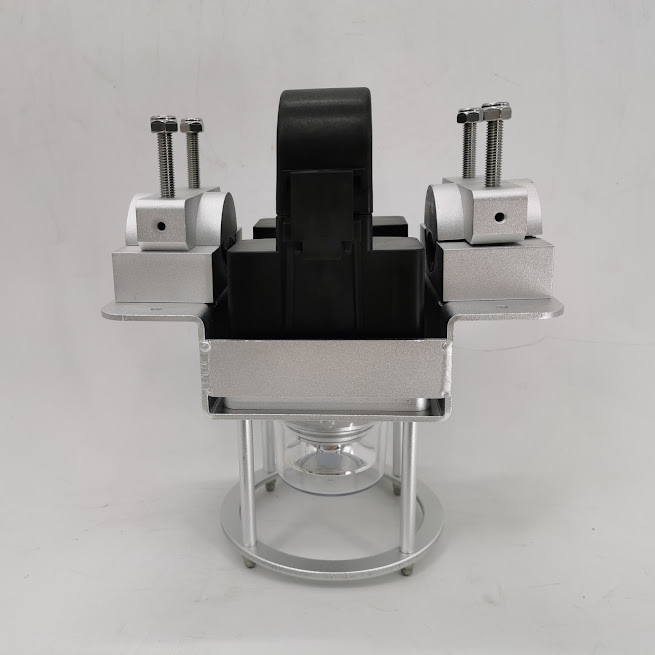An overhead power line is a structure used in electric power transmission and distribution to transmit electrical energy along large distances. It consists of one or more conductors (commonly multiples of three) suspended by towers or poles.
Red obstruction lights are used to increase conspicuity during nighttime. The red obstruction light system is composed of flashing omnidirectional lights (L-864) and/or steady-burning or flashing (L-810) lights. When one or more levels are comprised of flashing lights, the lights should flash simultaneously
1. Single Obstruction Light. A single red obstruction light (L-810) may be used when more than one obstruction light is required either vertically or horizontally, or when maintenance is needed, and can be installed within a reasonable time.
- Top Level. A single steady-burning light (L-810) may be used to identify low structures, such as airport instrument landing system buildings, as well as long horizontal structures, such as perimeter fences and building roof outlines.
- Intermediate Level. Single flashing or steady-burning lights (as appropriate for size and type of structure) may be used on skeletal and solid structures when more than one level of lights is installed, and there are two or more single lights per level.
 |
CK-11L, Low Intensity Type A, 10cd, Single
|
 |
CM-11, Low Intensity Type B, 32.5cd
|
 |
CK-15, Medium Intensity Type B-Flashing, Type C-Steady, 2000cd
|
2. Double Obstruction Light. A double steady-burning (L-810) light should be installed when used as a top light, at each end of a row of single obstruction lights, and in areas or locations where the failure of a single unit could cause an obstruction to be totally unlighted.
- Top Level. Structures 150 feet (46 m) AGL or less should have one or more double steady-burning lights installed at the highest point and operating simultaneously.
- Intermediate Level. Double flashing or steady-burning lights (as appropriate for size and type of structure) should be installed at intermediate levels when a malfunction of a single light could create an unsafe condition and in remote areas where maintenance cannot be performed within a reasonable time. Both units may operate simultaneously, or a transfer relay may be used to switch to a spare unit should the active system fail.
- Lowest Level. The lowest level of light units may be installed at a higher elevation than normal on a structure if the surrounding terrain, trees, or adjacent building(s) would obscure the lights. In certain instances, as determined by the FAA, the lowest level of lights may be eliminated.
 |
CK-11L-S, Low Intensity Type A, Dual(1 duty + 1 stand-by)
|
 |
CM-11-S, Low Intensity Type B, Dual(1 duty + 1 stand-by)
|
 |
CK-15-S, Medium Intensity Type B, Dual
|
 |
CM-15-S, Medium Intensity Type C, Daul
|
3. Solar Powered Red Obstruction Light
 |
CK-11L-TZ, Solar Low Intensity Type A
|
 |
CK-11L-TZ-S, Dual Solar Low Intensity
|
 |
| CM-11-T, Solar Low Intensity Type B |
 |
| CM-11-TZ, Solar Low Intensity Type B |
 |
| CK-15-T, Solar Medium Intensity Type B |
 |
| CK-15-TZ, Solar Medium Intensity Type B |
 |
| CK-15T, Solar Medium Intensity Type B |
 |
| CK-15T-S, Solar Dual Medium Intensity |
|
For more details:
Ms Sophia Guo | Overseas Business Development
Hunan Chendong Technology Co.,Ltd
T:+86-0731-85563165 85563265 | F: +86-0731-85563365
P: +86-13929493960(Whatsapp) | Skype:sophia.guo88
A:No.101,#4 Building, XinCheng Science and Technology Park, West of Yuelu Ave., Hi-Tech Development Zone,Changsha city, Hunan province, China.
W:http://www.cdt-en.com/ | E: sophia@chendongtech.com


















评论
发表评论